Related Research Articles

The S60 Platform was a software platform for smartphones that runs on top of the Symbian operating system. It was created by Nokia based on the 'Pearl' user interface from Symbian Ltd. It was introduced at COMDEX in November 2001 and first shipped with the Nokia 7650 smartphone. The platform has since seen 5 updated editions. Series 60 was renamed to S60 in November 2005.
WebKit is a browser engine developed by Apple and primarily used in its Safari web browser, as well as all web browsers on iOS and iPadOS. WebKit is also used by the PlayStation consoles beginning from the PS3, the Tizen mobile operating systems, the Amazon Kindle e-book reader, Nintendo consoles beginning from the 3DS Internet Browser, and the discontinued BlackBerry Browser. WebKit's C++ application programming interface (API) provides a set of classes to display Web content in windows, and implements browser features such as following links when clicked by the user, managing a back-forward list, and managing a history of pages recently visited.
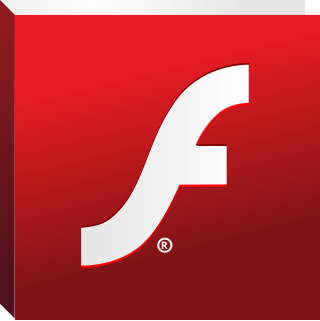
Adobe Flash Lite was a lightweight version of Adobe Flash Player, a software application published by Adobe Systems for viewing Flash content. Flash Lite operates on devices that Flash Player cannot, such as mobile phones and other portable electronic devices like Wii, Chumby and Iriver.

The Nokia N70 is a 3G smartphone from Nokia. It was announced as part of the Nokia's new line of multimedia smartphones, the Nseries, on 27 April 2005. It started shipping in September 2005. It runs on the S60 2nd Edition, Feature Pack 3 on Symbian v8.1 operating system. It was succeeded by the Nokia N73. The N70 was popular and sold well.
Series 40, often shortened as S40, is a software platform and application user interface (UI) software on Nokia's broad range of mid-tier feature phones, as well as on some of the Vertu line of luxury phones. It was one of the world's most widely used mobile phone platforms and found in hundreds of millions of devices. Nokia announced on 25 January 2012 that the company has sold over 1.5 billion Series 40 devices. It was not used for smartphones, with Nokia turning first to Symbian, then in 2012–2017 to Windows Phone, and most recently Android. However, in 2012 and 2013, several Series 40 phones from the Asha line, such as the 308, 309 and 311, were advertised as "smartphones" although they do not actually support smartphone features like multitasking or a fully fledged HTML browser.

The Nokia N93 is a smartphone from Nokia, part of the multimedia Nseries. It was introduced on 25 April 2006 and released in July 2006. It runs on Symbian OS v9.1 and the S60 3rd Edition interface. It was the most advanced camera phone from Nokia at the time of its release, and was particularly marketed for its swivel design like its predecessor Nokia N90, which mimics the appearance of a conventional camcorder.
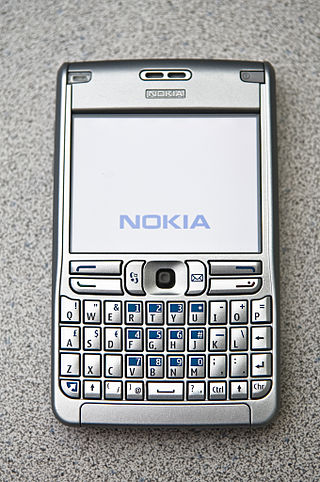
The Nokia E61 is a smartphone from the Eseries range, a S60 3rd Edition device targeting business users in the European market. It was announced as part of the new Eseries business line on 12 October 2005 along with the Nokia E60 and E70. As of Q4 2006, Cingular and Rogers Wireless deployed a similar yet restricted version designated the Nokia E62 in the North American and Brazilian markets. The E62 is substantially similar but without an 802.11 WiFi chipset or W-CDMA (UMTS) 3G support. E61 supports 900/1800/1900 bands, while E62 can operate in 850/900/1800/1900 in order to support American networks.
Opera Mobile is a mobile web browser for smartphones, tablets and PDAs developed by Opera.

The Nokia N73 is a smartphone announced by Nokia on 2006 as part of the Nseries and started shipping on 15 July. The N73 succeeded the N70 and packed in numerous multimedia features. It features a 3.2 megapixel autofocus camera, a front camera, a then-large 2.4-inch display, and stereo speakers, all in a relatively slim and pocketable size and form. It runs on Symbian v9.1. An improved, music-focused version called N73 Music Edition was released in 2007.
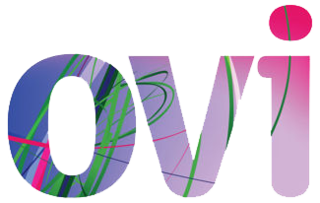
Ovi by Nokia was the brand for Nokia's Internet services. The Ovi services could be used from a mobile device, computer or via the web. Nokia focused on five key service areas: Games, Maps, Media, Messaging and Music. Nokia's aim with Ovi was to include third party developers, such as operators and third-party services like Yahoo's Flickr photo site. With the announcement of Ovi Maps Player API, Nokia started to evolve their services into a platform, enabling third parties to make use of Nokia's Ovi services.

The Samsung G810 is a Symbian OS smartphone developed and released by Samsung Telecommunications. It was announced at Mobile World Congress on 11 February 2008.
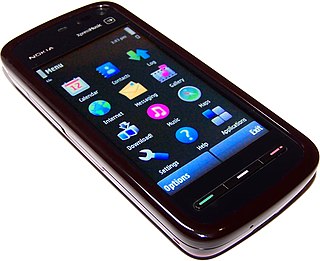
Nokia 5800 XpressMusic is a smartphone part of the XpressMusic line, announced by Nokia on 2 October 2008 in London and started shipping in November of that year. Code-named "Tube", it was the first touchscreen-equipped S60 device by Nokia – essentially it was the first device to run Symbian^1, also known as S60 5th Edition, the touch-specific S60-based platform created by the Symbian Foundation. The touchscreen features tactile feedback.

The Nokia E66 is a slider smartphone in the Nokia Eseries range, a S60 platform third edition device with slide action targeting business users. It is a successor to the Nokia E65 with which it shares many features.

The Sony Ericsson Satio (U1) is a smartphone, announced by Sony Ericsson at the Mobile World Congress in Barcelona, Spain on 15 February 2009 as the Idou. It was released on 7 October 2009 in the UK in 3 colour schemes: Black, Silver and Bordeaux (Red).

Samsung GT-i8910 Omnia HD is a smartphone manufactured by Samsung Electronics, first announced at MWC 2009 on February 18, 2009. The device was the first phone capable of playing and recording 720p HD video. It runs on the S60 5th Edition (Symbian^1) platform, the only Samsung device to do so.

The Nokia E52 and Nokia E55 are smartphones from Nokia's business-oriented Eseries range. They run Symbian OS v9.3. The E55 was announced on 16 February 2009, whilst the E52 was announced later on 6 May 2009. They are both physically and functionally identical, except that the E55 has a 'half-QWERTY' keyboard, similar to the SureType keyboard on BlackBerry Pearl, whereas the E52 revision has a traditional T9 keypad.

The Nokia X6 is a music-oriented capacitive touchscreen smartphone and portable entertainment device by Nokia. It was announced in early September 2009 during Nokia World 2009 in Germany.

Symbian is a discontinued mobile operating system (OS) and computing platform designed for smartphones. It was originally developed as a proprietary software OS for personal digital assistants in 1998 by the Symbian Ltd. consortium. Symbian OS is a descendant of Psion's EPOC, and was released exclusively on ARM processors, although an unreleased x86 port existed. Symbian was used by many major mobile phone brands, like Samsung, Motorola, Sony Ericsson, and above all by Nokia. It was also prevalent in Japan by brands including Fujitsu, Sharp and Mitsubishi. As a pioneer that established the smartphone industry, it was the most popular smartphone OS on a worldwide average until the end of 2010, at a time when smartphones were in limited use, when it was overtaken by iOS and Android. It was notably less popular in North America.
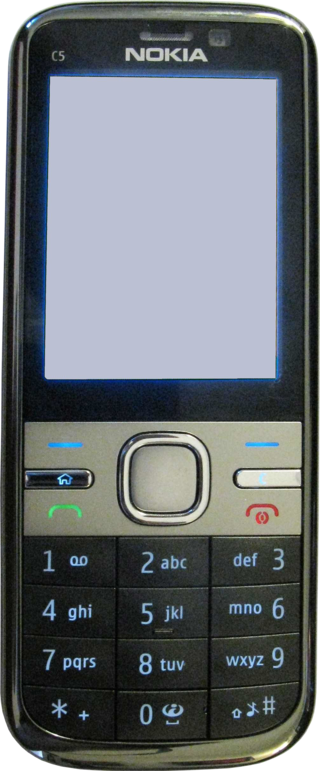
The Nokia C5-00 is the first in the new Cseries of Nokia phones, announced March 2010. The C5-00 is a smartphone with messaging and social networking features, including, for example, Facebook and Flickr applications. The C5-00 allows multitasking and has a 2.2-inch (56 mm) display and a 5.0-megapixel camera. It also includes GPS and a free navigation courtesy of Ovi Maps. It runs on Symbian OS with S60 3rd Edition Feature Pack 2.

The Nokia N8 is a touchscreen-based smartphone developed by Nokia. Announced on 27 April 2010, the Nokia N8 was the first device to run on the Symbian^3 mobile operating system and it was the company's flagship device for the year. It was released on 30 September 2010 at the Nokia Online Store before being released in markets around the world on 1 October 2010. There were two version made, the N8 and the N8-00. The N8 was made for Vodafone and locked to its networks, and the N8-00 was made by Microsoft and open network.
References
- ↑ "Nokia Browser for Smartphones". Archived from the original on 28 February 2012. Retrieved 16 February 2012.
- 1 2 Nokia PR (2 November 2005). "Nokia introduces a new Web browser for S60 3rd Edition". press.nokia.com. Archived from the original on 25 March 2012. Retrieved 21 March 2007.
- ↑ "Nokia Developer - S60WebKit". Archived from the original on 1 March 2012. Retrieved 16 February 2012.
- ↑ Eldar Murtazin (28 December 2006). "Description Nokia Web Browser S60 (OSS Browser)". mobile-review.com. Retrieved 21 March 2007.
- ↑ Nokia PR (13 June 2005). "Nokia develops a new browser for Series 60 by using open source software". press.nokia.com. Archived from the original on 25 March 2012. Retrieved 21 March 2007.
- ↑ Nokia PR (24 May 2006). "Nokia releases 'Web Browser for S60' engine code to open source community". press.nokia.com. Archived from the original on 28 February 2007. Retrieved 21 March 2007.
- ↑ S60 Browser 7.1 - Nokia Developer Community - Discussions Archived 21 October 2012 at the Wayback Machine . Developer.nokia.com. Retrieved 2013-10-23.
- ↑ Nokia N97 Mini Exclusive Hands-On Review. Techie-buzz.com (21 February 2010). Retrieved 2013-10-23.
- ↑ Browser version-specific information Archived 13 February 2012 at the Wayback Machine . Developer.nokia.com (22 February 1999). Retrieved 2013-10-23.
- ↑ "Nokia Browser 7.2". Browser version-specific information. Nokia Developer. 2 November 2011. Archived from the original on 13 February 2012. Retrieved 28 February 2012.
- ↑ Browser and Maps updates for many S60 3rd Edition and S60 5th Edition phones. Allaboutsymbian.com (29 June 2011). Retrieved 2013-10-23.
- ↑ All About Symbian - Symbian Anna roll out has started
- ↑ (in Dutch) Home - Nokia - Nederland. Europe.nokia.com. Retrieved 2013-10-23.
- ↑ Browser 7.4.x. Developer.nokia.com (22 February 1999). Retrieved 2013-10-23.